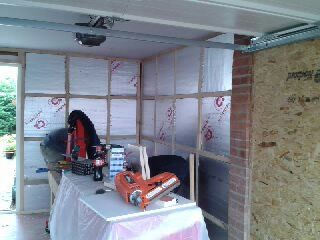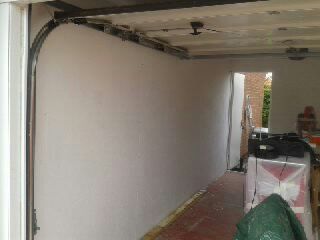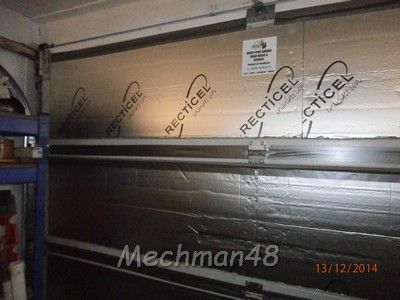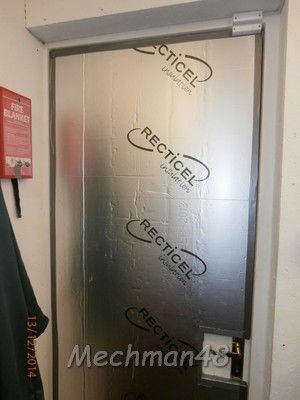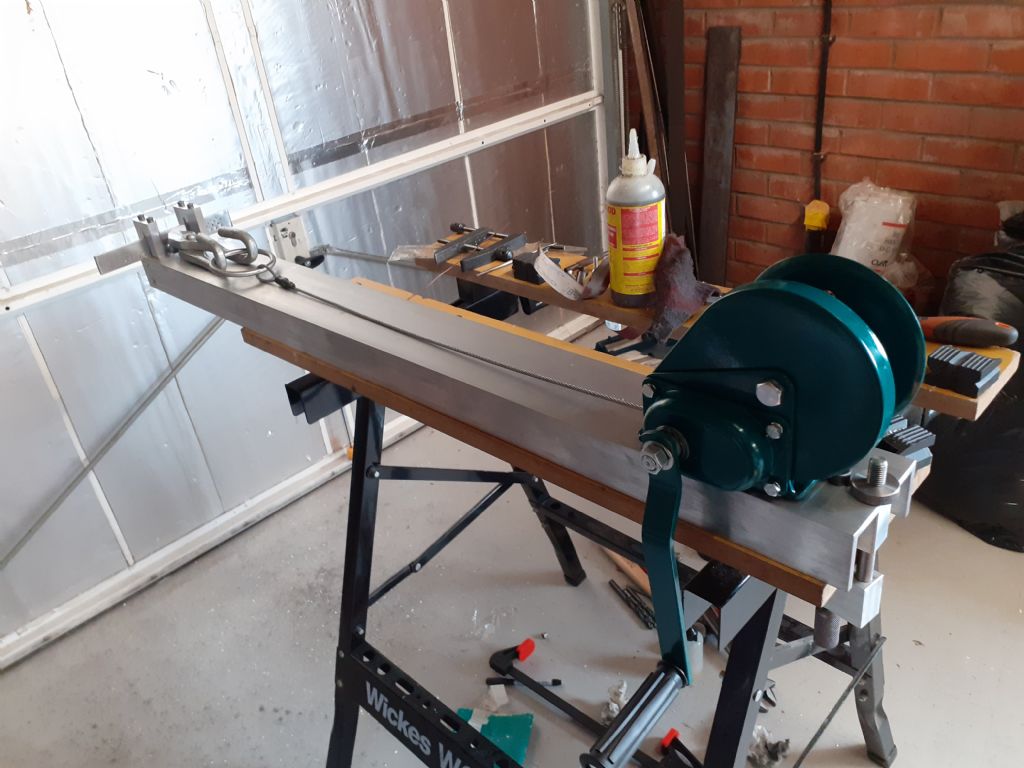We seem to return to this time and again.
The basics, as I understand them, are:
No moisture producing things allowed inside, so no wet bikes, no (or only very small and brief) soldering and brazing flames, and not too many spectators who will persist in breathing out.
Seal against draughts
Effective vapour barrier in walls, floors and ceilings. Vapour barrier must go inside the insulation the air inside a building is almost always wetter than the air outside and we don't want that wet air to saturate the insulation, which would render it nearly useless.
Insulate, to prevent any rapid temperature changes, which will often cause condensation. Foil is not an insulation, it may be a vapour barrier and a draft excluder but insulation must be thicker than that. Though I think there are products which have several layers to provide both the vapour barrier and the insulation.
Heaters which spread the warm air around, for comfort.
Consider the relative costs of fuel for the heaters, before deciding on the heaters, mains gas is much cheaper than electricity per KW hour for example, Though the exhaust must be piped outside, and this example may not be true everywhere.
If you have poor or no insulation, and I agree it can be expensive and difficult, then covers on machines with small black heaters underneath and hand tools in cupboards with similar heaters is effective. The purpose of the heater is to make the machine warmer that its surroundings so any condensation goes elsewhere. So low consumption heaters and no thermostat. You want the protection to be on all the time, at least in the colder months. If a thermostat exists to do anything then it exists to switch on and off. Anyone have any practical experience of the relative merits of plastic covers versus permeable fabric ones? Heaters also have the benefit that the tools feel a little warmer when you are using them on cold days.
Finally, the late great Tom Walshaw, writing as Tubal Cain, responded to this problem by asking his wife to knit him an extra thick sweater and he had no heating at all, and his shop was in Westmorland where they know a thing or two about cold and rain.
And really finally, the Americans say your tools don't rust when you are using them!
Rod
Martin Kyte.


